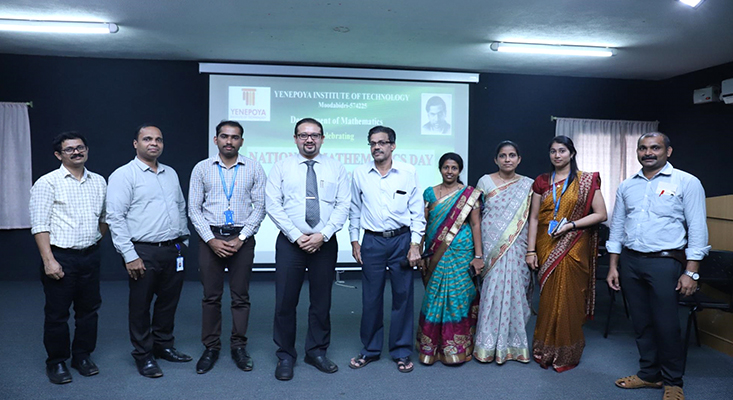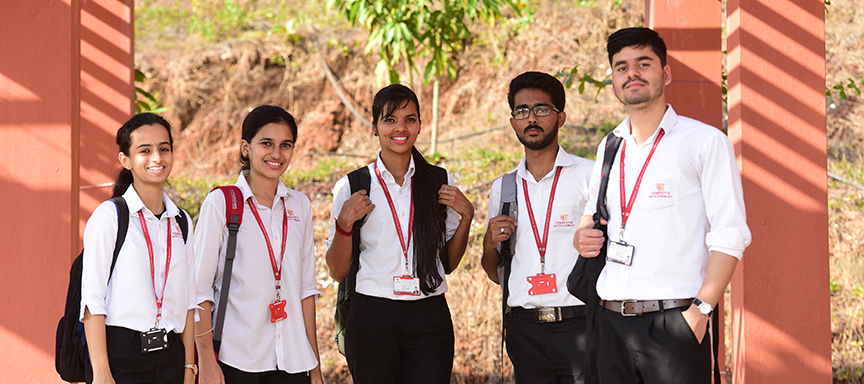Dr. M. Ajith Rao
Designation : Associate Professor
Qualification : B.Sc. M.Sc., M.Phil., Ph.D.
View Profile
Ms. Sashma C. H.
Designation : Assistant. Professor
Qualification : B.Sc., B.Ed. M.Sc., M.Ed.
View Profile
Ms. Prabha
Designation : Assistant Professor
Qualification : B.Sc. M.Sc.
View Profile
Pallavi
Designation : Assistant Professor
Qualification : MSC
View Profile
Seethalakshmi H K
Designation : Assistant Professor
Qualification : B.Sc., M.Sc.
View Profile
Kavya A J
Designation : Assistant Professor
Qualification : MSc, BSc
View Profile
Vision
To strive to be recognized for academic excellence in the field of Mathematics through in-depth teaching and research, and to play a pivotal role in strengthening the ability of aspirants to solve engineering problems through mathematical problem solving techniques.
Mission
Making Engineers to develop mathematical thinking and applying it to solve complex engineering problems, designing mathematical modeling for systems involving global level technology.
Department Activities for Academic year 2022-2023:-
|
Event Name
|
Duration
|
Resource Person
|
Organization |
| INTERNATIONAL MATHEMATICS DAY |
11thMarch 2023, to 14thMarch 2023 |
Dr. Ramanandha H S Dean – Student welfare, SJEC |
YIT, Moodbidre |
Department Activities for Academic year 2020-2021:-
|
Event Name
|
Duration
|
Resource Person
|
Organization
|
|
A session on “ Ethics in Engineering Profession”
|
3rd August,2021 to 5th August,2021
|
Ms. Likhitha B Shetty
Assistant Professor, YIT- Moodbidri
|
YIT, Moodbidri.
|
|
A session on “ Ethical use of Chemicals”
|
3rd August,2021 to 5th August,2021
|
Ms. Likhitha B Shetty
Assistant Professor, YIT- Moodbidri
|
YIT, Moodbidri.
|
Department Activities for Academic year 2019-2020:-
|
Event Name
|
Date
|
Resource Person
|
Organization
|
|
A one day talk on “Life of Butterflies”
|
31th October,2019
|
Speaker: Mr. Sammilan Shetty
founder of ‘Sammilan shetty’s Butterfly park’ – Belvai
Coordinator: Ms. Shashirekha K
Assistant Professor, Department of Engineering Chemsitry, YIT- Moodbidri
|
YIT, Moodbidri.
|
|
Webinar on “ Preparation of solution in the Engineering Laboratory and Common Challenges”
|
14th June,2020
|
Speaker: Mr. Nagaraj P
Associate Professor and Head, Department of Engineering Chemsitry, YIT- Moodbidri
Coordinator:Mr. Mohith Prasanna K
Assistant Professor, Department of Engineering Chemsitry, YIT- Moodbidri
|
YIT, Moodbidri.
|
The department celebrated the National Mathematics Day - 2018 0n December 22 of 2018

Department Activities for Academic year 2015-2016:-
|
Event Name
|
Date
|
Resource Person
|
Organization
|
|
A one day talk on “Chemical ecology of Butterfly’’
|
18th September,2015
|
Speaker: Mr. Sammilan Shetty
Founder of ‘Sammilan shetty’s Butterfly park’ – Belvai
Coordinator: Mr. Nagaraj P
Assistant Professor and Head, Department of Engineering Chemsitry, Dr. M.V. Shetty Institute of Technology, (under Yenapoya management), Moodbidri
|
Dr.M.V.Shetty Institute of Technology (under Yenapoya management), Moodbidri
|
| Sr. No |
Academic Year |
Total Offers |



.jpg)

.jpg)


